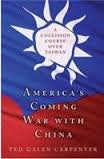
This article looks to answer is the Chinese model, oft called the Beijing consensus, really that much different from the Washington consensus that describes neo liberal economics. It also looks to outline what positives and negatives it has.
Worryingly defined as being admired from Vietnam to Syria the author says the China Model includes aspects from free liberal economic policy along with what Suisheng Zhao amelioratively calls Strong government, an active secret police and state control over information.
The Washington consensus goes back to 1989 when a paper listed 10 aspects of neo liberal economics that would be palatable to bigwigs in Washington to be implemented in Latin America. This schema ended up not working and was followed in 2004 by another competing idea. John Ramos coined the Beijing consensus, an economic idea that focused on equality and basic quality of life as key performance indicators of the success of an economic policy rather than GDP per capita.
Complications come when supporters of free market liberalism see that the Bank of China is state run and property rights are weak to the extent that local Chinese authorities can sell land farmed for decades by rural peasants to developers to raise cash.
The Beijing consensus may be unfairly named as Singapore, South Korea and Hong Kong all have a history with oppressive governments and strong, fast paced, developing economies.
Suisheng Zhao claims China have basically cherry picked the best parts of the 1989 Washington consensus (page 7) and that calling China oppressive is a loaded term as it wishes to introduce democracy but just not at the expense of economy and what it sees as progress. The author back this up using the example of the 2003 amendment to the law that banned closed meeting and the ability of retired officials of continuing to hold sway over local decisions. 2003 also saw health officials held accountable for that years SARS outbreak.
The author, as promised, then moves onto + and – of the Chinese Model:
+
1. It can be seen as an economic fast track without the social/political disorder that can be a by-product of democracy.
2. According to Joseph Nye who seems to be everywhere in a politics degree it is particulary appealing to African states who in some cases really need both order and economic growth and quick.
3. The debt in the West is not a good advert and has not been since 2008.
4. The Washington consensus treats non developed states as being able to accept privatisation before proper regulatory control and democracy before a shared culture of political tolerance
5. Chinese foreign policy is guided solely by economics not moral compass. This IS consistent if we note that the Bandung Protocols was signed in 1955.
Gerry Stoker may want to not that what LARRY Diamond called the ‘democratic recession’ in his 2008 book may be due to the US neo conservative installation of democracy when African states were not ready. This undermines democracy and makes people look for an alternative.
–
1. It has no moral appeal. What A. Sen meant when he talked of the intrinsic human value of having your say.
2. ‘Brand China’ is not trusted outside places like the Sudan and Zimbabwe.
3. While impressive is any economic development worth the forced labour camps and environmental pollution.
4. Most of Chinas development has come after the easing of the brutal rule. Maos time was less impressive that Dengs and as China has become less oppressive it has development has been more impressive.
5. Chinas rise since the 1970’s has been so quick it is too early to judge whereas the liberal values the US live by today can be traced back to John Adams et al…
The author concludes with the notion of a rising and happy middle class but says judgement should be put on hold until after the recession and the come back of the Washington consensus. Suisheng Zhao answers the questions set at the beginning when we learn. The China Model is not the same as the 1989 Washington consecus as China has just cherry picked the best bits. Maybe we should do the same of it such as making foreign policy decision based on economics not our moral compass. It seems to be working for both China and the infrastructure and ultimate happiness of Africans it has been applied to so far.




